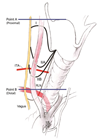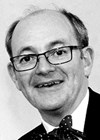ENT features archive for 2017
Achieving consensus on candidacy for cochlear implantation
The British Cochlear Implant Group’s candidacy working group recently ran a national exercise, working towards a consensus on candidacy for cochlear implantation in the UK. Padraig Kitterick and Debi Vickers were instrumental in this exercise, and in the article below,...
Cochlear implantation for single-sided deafness and asymmetric hearing loss
Continuing our sub-theme of cochlear implantation candidacy, Richard Irving and Raghu Kumar review the principles and benefits of cochlear implantation in individuals who have an asymmetric hearing loss. It is well known that cochlear implantation improves auditory capacity, and in...
Cochlear implantation in the developing world: perspectives from the Indian subcontinent
Cochlear implants are an expensive technology, yet profound hearing loss is far from a developed-world phenomenon. On the contrary, incidences of both congenital and acquired hearing losses are high in the developing world. This article explains how an initiative in...
Cochlear implants for children
The field of cochlear implants in children has expanded remarkably over 40 years. Elizabeth Tyszkiewicz reflects on success and current challenges and calls for a national review of outcomes for young adults who received their implants in childhood. Aleena is...
A surgeon’s perspective on the challenges facing cochlear implantation in children
Cochlear implantation in children offers a different set of challenges and goals to adult practice. In this article, Iain Bruce, Professor of Paediatric Otolaryngology in Manchester, UK, explains some of the current clinical and research challenges in paediatric cochlear implantation,...
Extended benefits of cochlear implantation in the elderly
With the challenges presented by an ageing population, Louise Craddock and Charlie Huins describe the benefits of cochlear implants for deaf elderly adults that go beyond improvement of hearing and speech understanding. Introduction People aged over 65 make up 7.4%...
Music and hearing aids - the current state of affairs
‘Speech sounds great, but music isn’t right’ is a common complaint from hearing aid users across the globe. In this article, Marshall Chasin, one of the most published audiologists on the subject of music and hearing, outlines why patients with...
Seven things ENT surgeons can learn from the hairdressers
In a nod to our origins as barber surgeons, Australian ENT surgeon and blogger Eric Levi gives us an entertaining insight into what he has learned from his hairdresser that makes him a better doctor. I’ve been to the hairdressers...
The astronomer’s nose: Tycho Brahe’s controversial prosthesis
Tycho Brahe (1546-1601) is a familiar and colourful figure in the history of science. The immense quantity of data he collected during his lifetime would enable the work of Johannes Kepler and has gained him admission to the astronomical pantheon....
Thyroid cancer – the last decade
Professor Ashok Shaha describes the evolution in the treatment of thyroid cancer that he has witnessed over the last decade and the invaluable progress made by himself and others, from their contributions to staging systems and guidelines. Nuances and paradigm...
Intraoperative nerve monitoring: 2017
Having written the definitive text on laryngeal nerves, Gregory Randolph and Dipti Kamani describe the benefits of intraoperative neural monitoring and, importantly, how to proceed if the nerve is pathologically involved or there is loss of signal. Over the years,...
Lessons learned from running a national thyroid surgery registry
The UK Registry of Endocrine and Thyroid Surgery is now yielding the rewards of meticulous data collection and years of hard work. David Scott-Coombes discusses the advantages and the unintended consequences of their success. The British Association of Endocrine and...




















